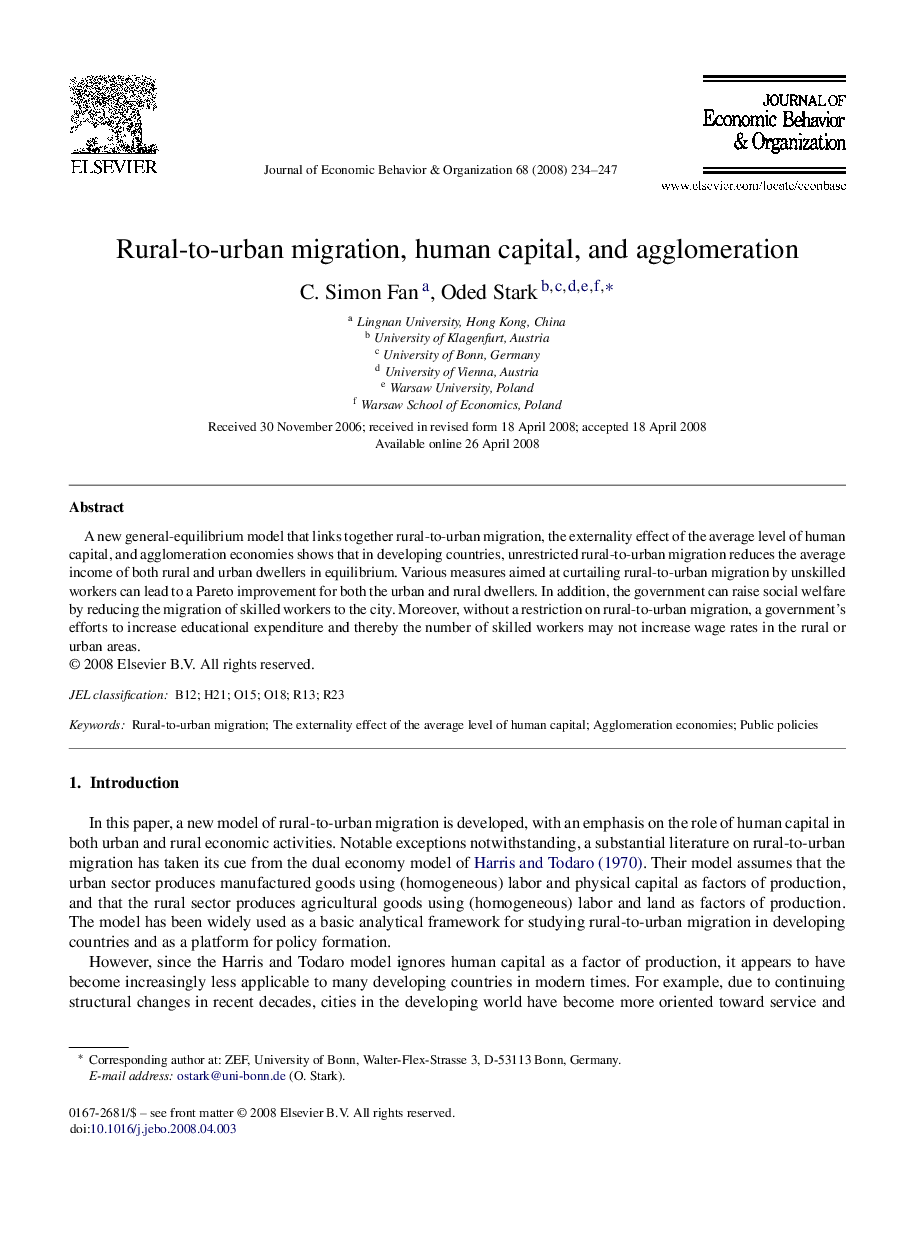| Article ID | Journal | Published Year | Pages | File Type |
|---|---|---|---|---|
| 884502 | Journal of Economic Behavior & Organization | 2008 | 14 Pages |
A new general-equilibrium model that links together rural-to-urban migration, the externality effect of the average level of human capital, and agglomeration economies shows that in developing countries, unrestricted rural-to-urban migration reduces the average income of both rural and urban dwellers in equilibrium. Various measures aimed at curtailing rural-to-urban migration by unskilled workers can lead to a Pareto improvement for both the urban and rural dwellers. In addition, the government can raise social welfare by reducing the migration of skilled workers to the city. Moreover, without a restriction on rural-to-urban migration, a government's efforts to increase educational expenditure and thereby the number of skilled workers may not increase wage rates in the rural or urban areas.
